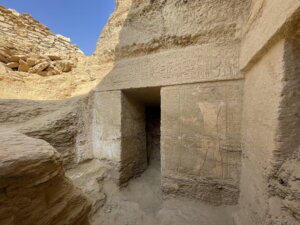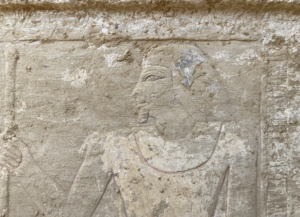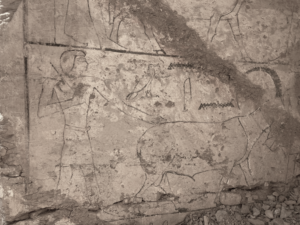Tomb of Mehtjetju
In 2021, during the exploration of the Dry Moat, the facade of a funerary chapel hewn in its eastern bank was unearthed. The tomb belonged to an official responsible for secret documents in the royal chancellery during the reign of the first pharaohs of the 6th Dynasty.

The dignitary’s name was Mehtjetju and he was, among other things, an official admitted to the secrets of the royal sealed documents, an inspector of the royal estate and a priest of the funerary cult of King Teti. Intriguingly, his name is written in the tomb in several different ways (such as Mehtjetji, Mehtjetju and Mehdjedju); which may indicate that it was of non-Egyptian origin. He most likely lived during the reigns of the first three rulers of the Sixth Dynasty: Teti, Weserkare and Pepy I, and therefore around the same time as Merefnebef.
 His high social position allowed Mehtjetju to hire good professionals to decorate the tomb, as the reliefs on the façade betray an exceptionally skilled hand, and the elegance of the lines and subtlety of the modelling are on a par with the best reliefs in the vizier’s tomb. Unfortunately, the rock in which the chapel was carved is very brittle and eroded, so it required the immediate conservation.
His high social position allowed Mehtjetju to hire good professionals to decorate the tomb, as the reliefs on the façade betray an exceptionally skilled hand, and the elegance of the lines and subtlety of the modelling are on a par with the best reliefs in the vizier’s tomb. Unfortunately, the rock in which the chapel was carved is very brittle and eroded, so it required the immediate conservation.
 No colours are preserved on the façade. It is possible that it was never painted because the decoration of the chapel was not completed. The side walls of the entrance have no relief decoration, but have scenes sketched in black ink on lime plaster. It was only on this basis that the reliefs were to be created. The sketches show leading of sacrificial animals: cows, oryxes and ibexes.
No colours are preserved on the façade. It is possible that it was never painted because the decoration of the chapel was not completed. The side walls of the entrance have no relief decoration, but have scenes sketched in black ink on lime plaster. It was only on this basis that the reliefs were to be created. The sketches show leading of sacrificial animals: cows, oryxes and ibexes.
The interior of the chapel has not yet been explored.

